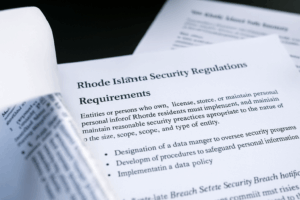Today’s blog is a look at three different issues that don’t get much coverage in discussions of the implementation of a WFH policy. Much of the conversation tends to focus on productivity and oversight issues. Here are three you should consider.
WiFi
Once your employees move off-site and WFH, or anywhere else for that matter, very serious data security issues arise. Whether at home or in a coffee shop, your employees will be accessing your data via WiFi connections that will not have the levels of security or firewalls that you have in place in the workplace. This may be the single most important security vulnerability that you face with WFH. Resolving this will take a strong combination of employee training and IT support and control over remote tools and approved software applications. This is one area that you will definitely need the services of an IT specialist with deep knowledge of these security issues.PBX v. VoIP
Moving to a WFH environment may be what finally pushes you into the work of Voice over Internet Protocol. (VoIP). If you aren’t already aware, VoIP is a voice communication toolset that takes you away from traditional “telco” lines and moves voice onto the internet. In short, you give up wires and send your voice over the internet when you make a phone call, instead of sending via traditional methods through the “telephone” provider. What does this have to do with WFH? The traditional office phone system –the PBX–is a location-based, on-site system. It offers little flexibility once employees move off-site and becomes of significantly diminished value. VoIP offers many tools unavailable on a PBX that can improve collaboration and communication among employees and between employees and clients. In short, a PBX is a leftover from an earlier era that just doesn’t work in the modern environment. VoIP offers multiple communication tools that a PBX just cannot provide. Also, VoIP can be a significant money-saver. It can lower per-minute costs and is less expensive to maintain and support.FLSA
Don’t leave human resource questions out of the mix of issues that WFH raises. In the US, most employment is governed by the US Fair Labor Standards Act. This is the 1938 act that set the standard 40-hour workweek, Federal minimum wage, and requires overtime for certain classifications of employees. Similar, often stricter laws exist at the state level, and sometimes even municipal. What matters here is that when an employee who is required to be paid overtime beyond 40 hours per week is working from home, you are responsible for determining that they are compensated properly if they cross the 40 threshold. Just because it is convenient for them to do a little extra work when it comes up does not absolve you from OT requirements. In this case, collaboration with Human Resources in developing policies that protect both you and your employee are essential.Discover Our Compliance Management Solutions
Worcester’s Leading Provider of Compliance Services
Discover our IT Solutions for Your Industry
Worcester’s Top Managed Service Provider
Explore our Managed Service Offerings
Worcester’s Top Managed Service Provider
Trave Harmon
Trave Harmon CEO and Founder of Triton Technologies. Humble beginnings in Vernon Connecticut, migrating to Worcester Massachusetts and eventually going international to help clients with their compliance and international legal requirements.



